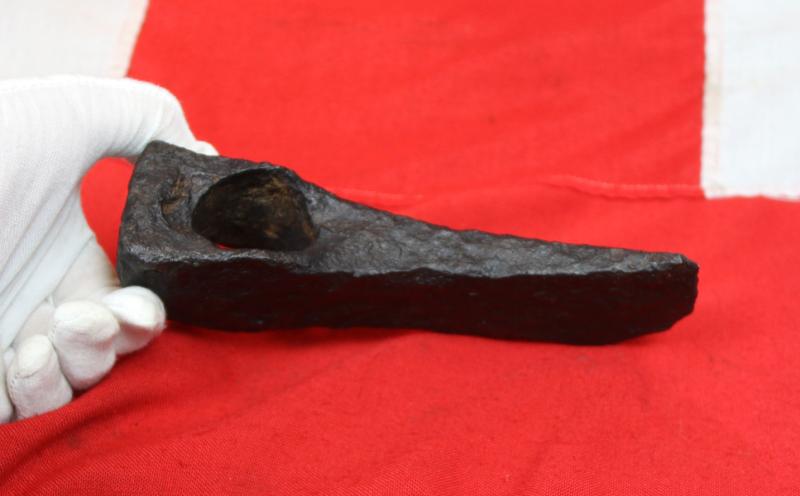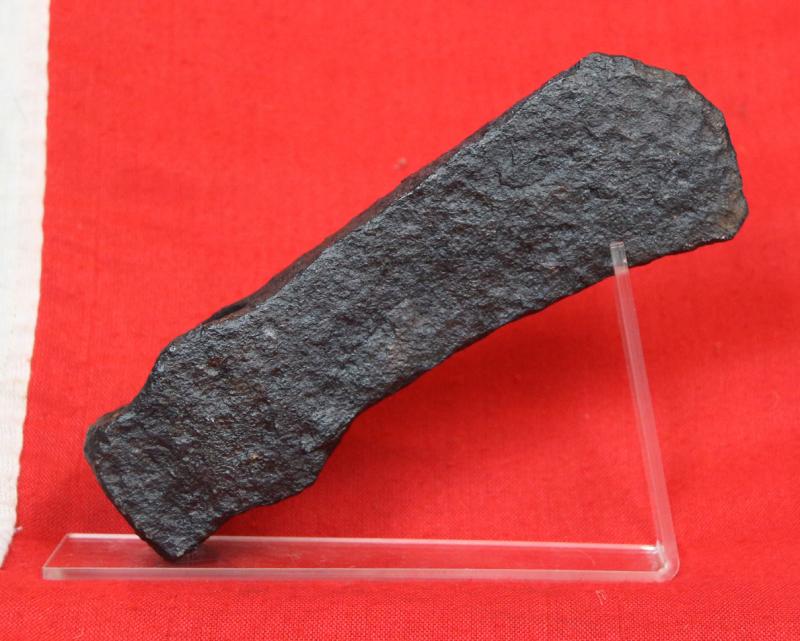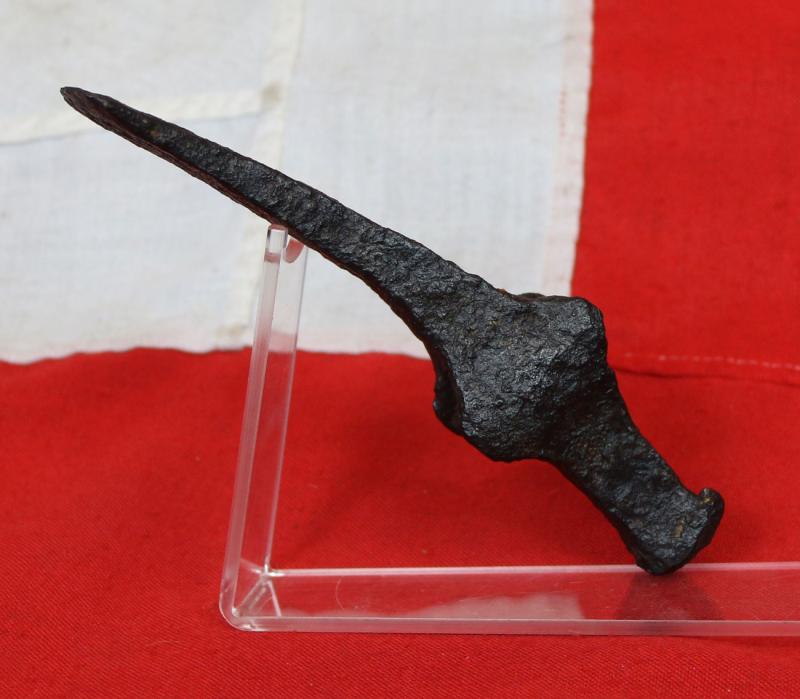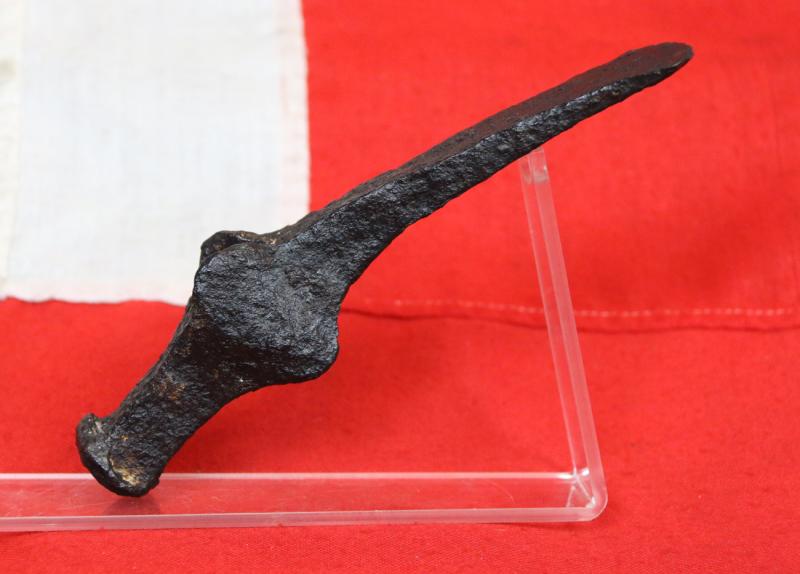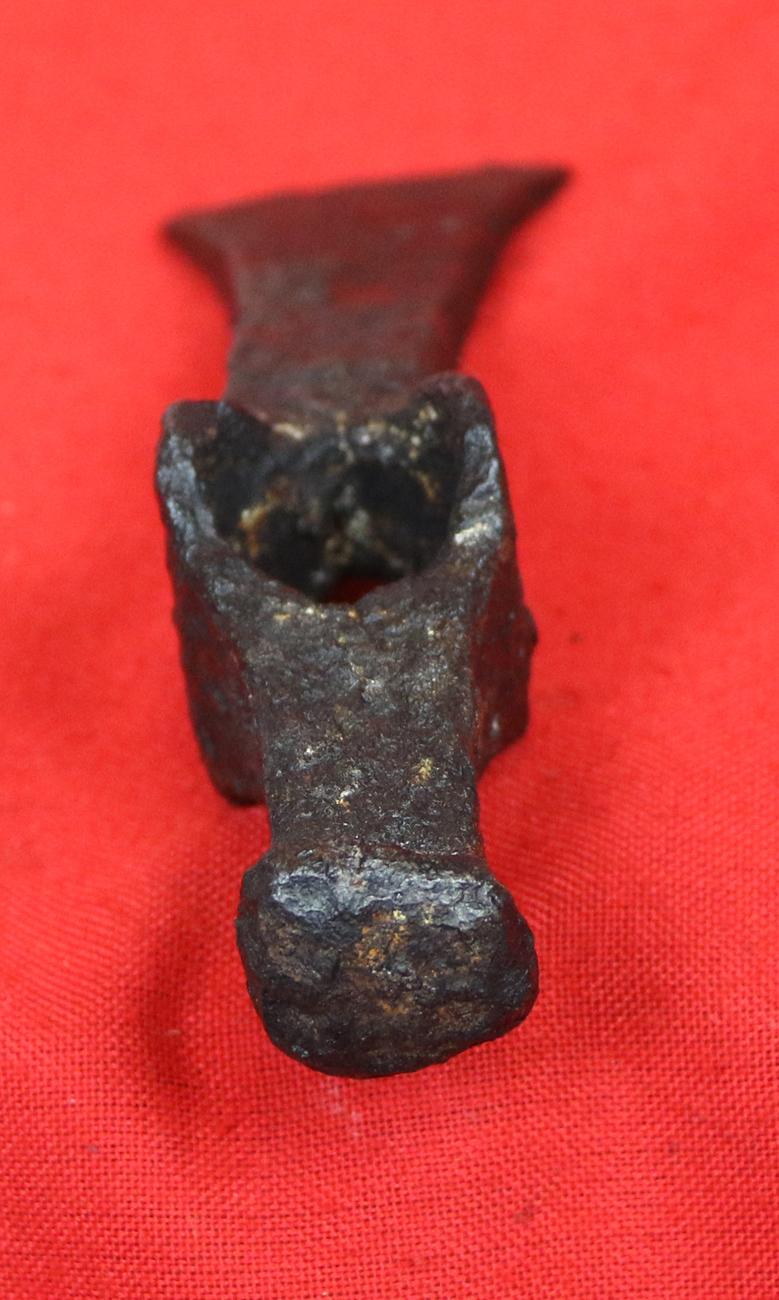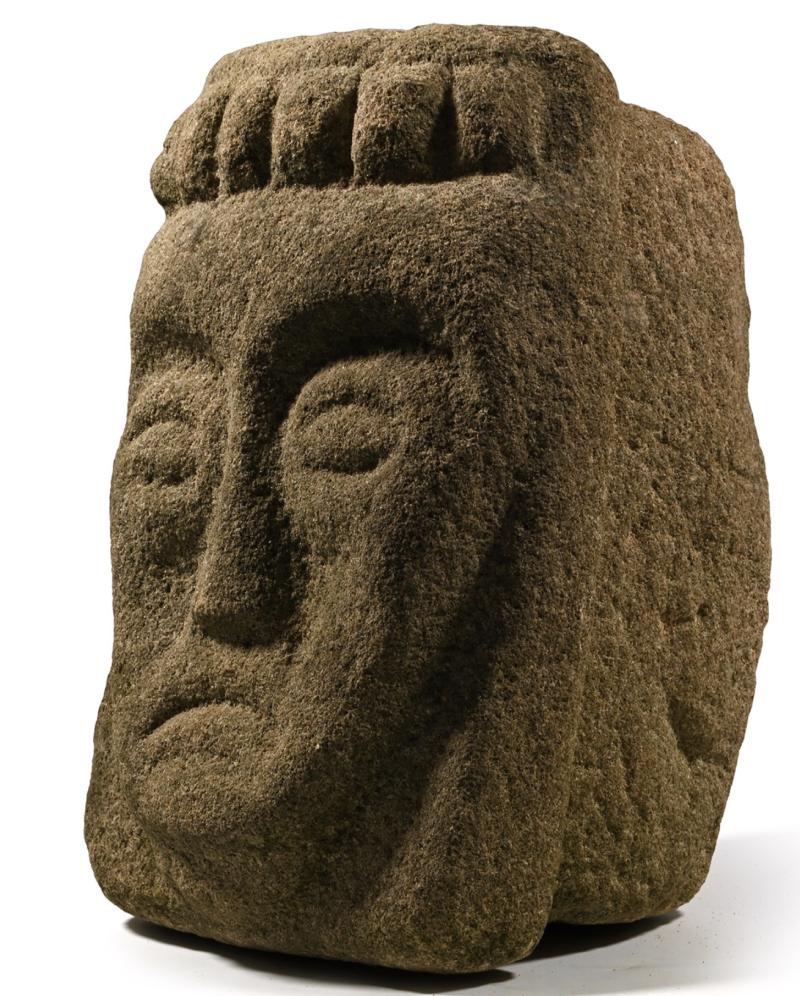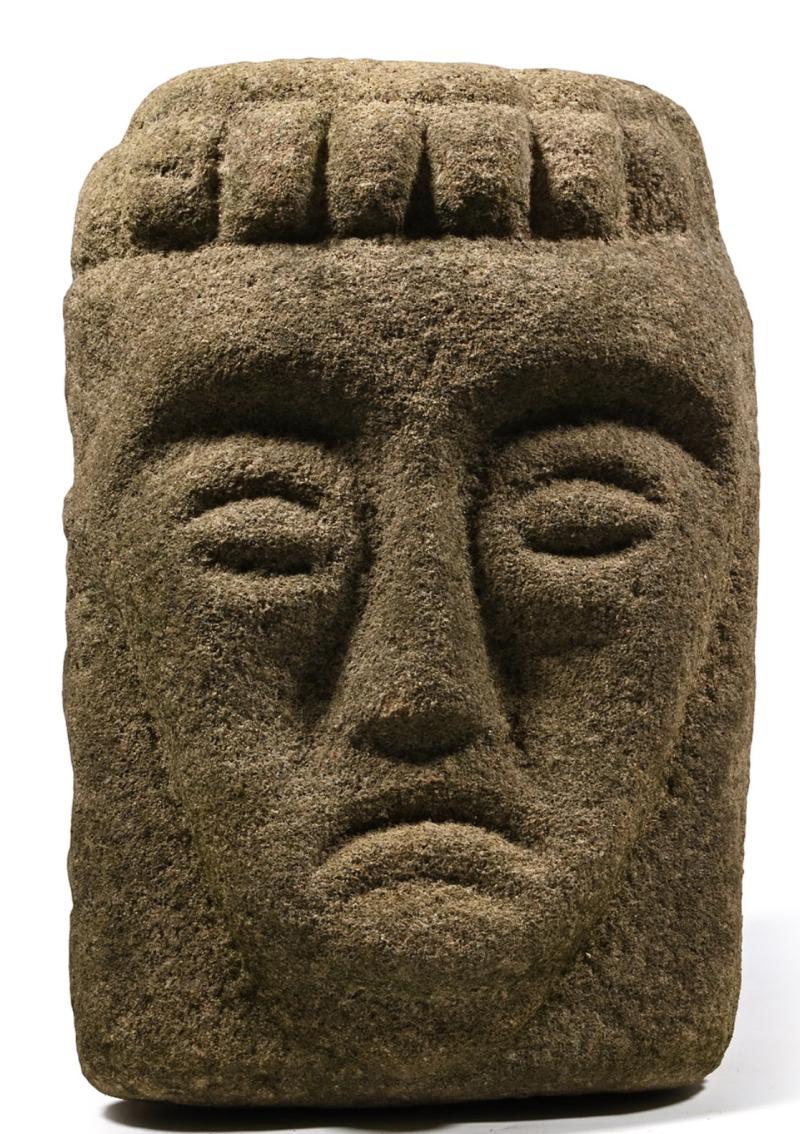Newly Arrived, Ancient Briton & Viking Artifacts. Including Ancient Viking War Hammer Axe Heads & A Rare Ancient Viking Hammer Adze For Viking Long Boat & Roundhouse Construction Found Near Camphill, North Yorkshire, Circa 1870's
The pieces we have acquired are wonderful antiquities from the Bronze Age, Ancient Briton and the Viking Norman era. Some truly wonderful and historical collectables, of incredible rarity and beauty. One artefact is a simply stunning, up to 1000 years old, a carved stone ancient British corbel, weighing almost 55 pounds, from such as a Norman church, monastery or even castle. It is a fabulous carved head of a the grimacing first man, Adam, he from the Garden of Eden, as told in the Old Testament Book of Genesis. His face likely revealing his regret of his being cast out by God, with his wife Eve, to face the misery of life after leaving God’s paradise, after succumbing to the serpents temptation via Eve. No doubt an allegory of the warning of the consequence that awaits those that fail in their devotion and duty. Interestingly it is one of the great historic myths that it was an apple tree within which the serpent appeared, with his poisonous apple, but there is no mention of an apple or apple tree at all in the tale. It was simply the fruit of the forbidden tree that bore peri, which just means fruit, of no particular or defined kind. It could just have easily been a peach, or even a kumquat.
The tradition of using carved stone corbels perhaps derives from stone vaults, although their ribs normally rise from capitals on wall shafts and these are usually foliate or moulded. However, Romanesque churches had external corbels below the eaves which have their architectural origins in classical brackets (and before that, the ends of roof timbers). Although most frequently carved as human heads, they could be animals, figures or grotesques. Explaining the relative lack of external decoration of churches in comparison with their interiors, William Durandus {who died in Rome in 1296 wrote: ‘for although its outward appearance be despicable, the soul which is the seat of God is illuminated from within’. It has therefore been taken that the grotesques and gargoyles seen on church exteriors are there to defend the building (heaven) and those within it from ever-present evil by fighting the Devil with his own. While literacy increased in the Middle Ages, the great majority of people entering a church would not have been able to read (and in any case, any script was most likely to be in Latin before the 16th century). Medieval people certainly recognised many more scenes from the Bible than modern churchgoers, but there were plenty of other sources of inspiration for painted and carved decoration. Hagiographical stories were widely used to convey Christian messages of morality and duty, yet the stories that concluded in considerably less than perfection also convey the consequences of failing to abide by such positive devotions. Thus in this case Adam started as the ideal of hagiographical perfection, at least in God’s eyes, but faced the painful reality after falling from God’s grace and his expulsion from paradise.
The first war hammer axe will be shown shown is in very nice condition for it's age, 8 inches long, and finely conserved. The front has a fine blade, with the reverse made into a flat, helmet smashing hammer. For combat, as a middle-heavyweight axe, it could have been mounted with a single or double handed haft. In a discussion on axes from the medeavil age we had together with Howard Blackmore {deputy curator at the Tower}, and Dennis Ottrey {our former gun and armour smith of over 40 years} the service of the war axe in hand to hand combat was critical in all the major battles for over a millennia. The lighter wide bladed axe, perfect for deep slicing and cutting, the heavy axe, for smashing and crushing, but often the most formidable, like the hand and a half sword in the world of long edged weapons, aka the bastard sword, the middle weight axe was the most functional. At home set in either a single handed short or two handed long haft, it was almost ideal for all purposes, and like the ‘bastard’ sword, it was perfect {in the right hands} for all fighting conditions. The hand-and-a-half sword was known as the ‘bastard’ sword because in trained hands it was far more powerful than the shorter, knightly cruciform sword, and much faster than the considerably longer zweihander {two handed} sword. Thus the middle-heavyweight axe could well have been classified as the ‘bastard’ axe. Although in hand-to-hand combat the only ideal defence against the war axe was the shield {or, possibly, superior agility} not another axe, unlike sword-to-sword combat, where the best defence against the sword, was another sword.
As well as axes we have a very rare original Viking hammer-adze, a vital tool for Viking long boat construction, and both the axes and the adze are around 1200 years old
All Viking ships were clinker built; the planks were overlapped at one edge and riveted together. In clinker shipbuilding you start build the outside first, and then put a frame inside it.
Viking ship frames are like display cases of grown timbers. For instance, the stem and stern posts would be taken from large, curved branches. Where two parts of the frame are to meet (usually a weak spot that needs re-enforcement) the Vikings used a single timber, cut from a branching element of a tree. On smaller vessels, where the oars didn’t pass through oarholes, the tholes (or rowlocks) were made from the junction of a branch with the trunk – putting the strongest part of the wood at the point of most strain.
Viking houses were built of wood. The longhouses had bowed walls in plan, forming a ship-like outline. The walls were lined with clay or consisted of wooden planks placed vertically into the ground, which supported the roof, along with two rows of internal posts. Outside the house was often supported by sloping posts. Roofs were slanted and could be thatched or wooden.
Renown scholar Alcuin of York was back at Charlemagne's court by at least mid-792, writing a series of letters to Æthelred, to Hygbald, Bishop of Lindisfarne, and to Æthelhard, Archbishop of Canterbury in the succeeding months, dealing with the Viking attack on Lindisfarne in July 793. These letters and Alcuin's poem on the subject, "De clade Lindisfarnensis monasterii", provide the only significant contemporary account of these events. In his description of the Viking attack, he wrote: "Never before has such terror appeared in Britain. Behold the church of St Cuthbert, splattered with the blood of God's priests, robbed of its ornaments.
The Vikings began arriving en masse with armies intent on conquest. These armies were led by Ivar the Boneless, Halfdan, and Ubba, three of the sons of Ragnar Lodbrok, who had been killed by the Northumbrian King Ælla. The first English city to fall to the invaders was York, conquered in 866. The Northumbrians tried in vain to retake the city, and King Ælla was killed in the process. One-by-one, other Saxon realms capitulated until virtually all of north and eastern England was under the direct control of the Danes.
At this point, the strongest Anglo-Saxon kingdom was Wessex, and upon the death of its king Æthelred, Alfred succeeded the throne and took the fight to the Vikings in England, who had begun annexing huge chunks of Mercia, an ally of Wessex. Alfred’s initial campaign against the Vikings was, however, a complete failure. Anglo-Saxon military tactics and defenses were incapable of dealing with Viking raids, and Alfred was eventually forced into hiding in the Somerset Marshes. The Vikings in England had succeeded in opening up the whole of Anglo-Saxon England to their mercy.
In 878, King Alfred came out of hiding and met with the lords still loyal to his cause. During his time in the Somerset Marshes, he had carefully planned a major counter-offensive against the Danish Viking army under Guthrum. Alfred’s campaign was successful, and Guthrum’s army was beaten, first in the field at Edington and then starved into submission at Chippenham. Several years later, a boundary was established, dividing England in two, with one half under Anglo-Saxon control and the other half, known as the Danelaw, under the control of the Vikings.
King Alfred organized better defenses, as well as a powerful free-standing army better equipped to deal with Viking tactics. As a result, subsequent raids and a major invasion attempt were thwarted. The Vikings who were part of this invasion attempt either ended up settling in Danelaw or sailing to Normandy and settling there.
Beyer, Greg. "The Vikings in England (Or were they Danes?)" TheCollector.com, March 11, 2023, https://www.thecollector.com/danes-or-vikings-in-england/
Title page of a late manuscript of the Prose Edda written by Snorri Sturluson (13th century), showing the Ancient Norse Gods Odin, Heimdallr, Sleipnir, and other figures from Norse mythology, plus the legendary axe hammer.
The Tjängvide image stone with illustrations from Norse mythology
By Berig - Own work, CC BY-SA 4.0, https://commons.wikimedia.org/w/index.php?curid=3682858
Showing axe hammers in combat and a Viking longship
Code: 25791
Price
on
Request

